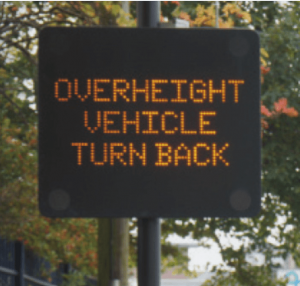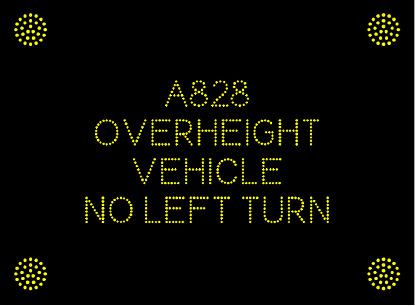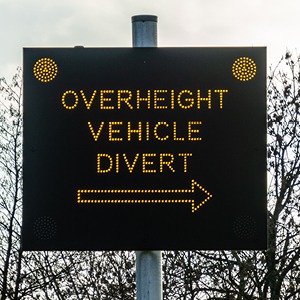 The City of Edinburgh Council had 4 hotspot bridge sites with a high amount of bridge strikes, and their existing overheight vehicle detection systems were obsolete and faulty.
The City of Edinburgh Council had 4 hotspot bridge sites with a high amount of bridge strikes, and their existing overheight vehicle detection systems were obsolete and faulty.
Background
This project required the replacement of 15 systems across 4 very busy sites around the city, and the scheme needed to be completed quickly with only temporary road closures to minimise road traffic delays and to avoid disruption to the Edinburgh Fringe.
Solution
Coeval supplied dual infrared overhead broken beam detectors on each approach to the low bridges, detecting any vehicles exceeding the maximum vehicle height.
Should a vehicle break the detection beam, Vehicle Activated Hazard Warning Signs are activated to warn of the height restriction ahead; the Warning Signs advise to use an alternative route e.g. ‘Overheight Vehicle Use A701 to Left’ or ‘Overheight Vehicle Stop’ if no alternative route exists.
Key Highlights
- Highly visible hazard warning sign
- Alerts overheight vehicle drivers of low bridge ahead
- Gives drivers a highly visible LED diversionary option before reaching the bridge
- Robust and extremely reliable design that has been protecting sites globally for over 20 years
- Wireless and GSM options reduce installation costs and operators benefit from the remote user interface and text message alerts
Outcome
Key components to completing the project in a short period were the maximisation of Coeval’s manufacturing, project management and installation capabilities, and the key part played by all of our staff, sub-contractors and other parties who contributed to the overall success of the project. The project was successfully completed within 6 weeks.
George King – Project Manager for The City of Edinburgh Council commented: “Coeval won the tender for the replacement systems and carried out the installation works … liaising and working with our own electrical consultants in the Street Lighting Section. The work was also completed within programme and budget. We are now satisfied that the new systems will help protect the bridges for several years to come.”
Download Case Study



